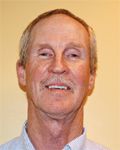Article
How assistance can ease EHR transition
Author(s):
You don't have to handle EHR implementation on your own. Learn how one doctor depended on others to achieve meaningful use.
It didn't take long for Martin B. McClintock, MD, a solo practitioner in Ballwin, Missouri, to achieve meaningful use. But the family physician, who has been practicing medicine for more than 30 years, reveals he had a lot of help.

In fact, McClintock does not use a computer when seeing patients. Instead, he takes notes on paper, just as he always has, so he can talk to them "face to face." He decided to stick with this system when he discovered that his style of seeing patients doesn't follow the flow of his electronic health record (EHR) system.
After he sees a patient, his nurses add the information to the EHR using templates that McClintock helped develop. To accomplish this task, he recommends getting help but advises against hiring anyone.
"[EHRs] cost way too much compared with how much the government possibly is going to pay us," he says. "Having my nurses type in [the information] has made this doable."
It's to their credit that McClintock met all of the qualifications for meaningful use by the beginning of June when they just began using the Amazing Charts system at the end of December.
At first, he and his staff simply practiced using the EHR. "After the first 2 to 3 months of practice with this program, we went back and looked at the meaningful use [criteria]," he says. Now the records for every patient he has seen since implementation comply with requirements.
"We've had our patients help us by handing them a slip to fill out when they come in the door," McClintock says. The pre-printed form ensures patient records are complete by the end of each visit. "It helps make [my nurses'] lives easier because they can type in exactly what the history is-and some of the other things that we need on the chart."
He has not transferred every patient file into the system, however, and has no plans to do so. Lack of time is one reason.
"Family practice physicians get paid so little; we almost jog between patient rooms," he says. "We don't have time to sit down at a computer."
McClintock and his staff spend about 1 hour each day adding information to the EHR and making sure what's there is correct. "[My nurses] put a lot of work into this," he says. To thank them, he plans to share his meaningful use incentive payment with them.





